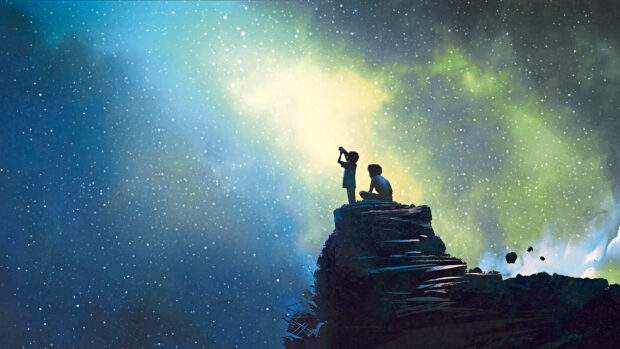
Professor Andrew Newsam, from the Astrophysics Research Institute at Liverpool John Moores University, tells Alice Hinds the Honest Truth about the stars that light up our night sky and sheds light on the mysteries behind these simple astronomical wonders of the universe.
You describe stars as “laboratories of cutting-edge physics” – why is our understanding of stars so important?
Stars are a wonderful mixture of simple and extraordinary. They are mainly made of the simplest, smallest atoms like hydrogen and helium, but they are so hot and massive that those atoms do amazing things, producing vast quantities of heat and even new kinds of atoms.
So, as we learn more about stars, we learn more about the fundamentals of the atoms that make us. And, of course, we would love to be able to make energy the same way that stars do – nuclear fusion, which would be much cleaner and more efficient than current nuclear power, and can run on water.
How are stars formed?
You need two main ingredients – hydrogen and gravity. Fortunately, the universe is full of both of these. If you get enough hydrogen in a giant cloud, gravity will squeeze it down into a denser and denser cloud. As it is squeezed it gets hotter until, if it is crushed enough, the centre will get so hot and dense it starts nuclear fusion reactions and a star is born.
Why do some stars appear brighter than others in the night sky?
It can be one of two things. Bigger stars are brighter, but the further away they are the fainter they look. If you want to tell the difference between these two, you have to measure the distance to the star. Unfortunately, we can’t just get a giant ruler out, so this is still one of the big challenges in astronomy.
What does the different colour of stars tell us about their composition?
Strangely, the colour doesn’t tell us much about what stars are made of, but it does tell us how hot they are. Hot stars are blue, cooler stars red. The sun is a yellow, medium temperature star of about 6,000C, but the hottest, bluest stars can be 200,000C.
Is it true, as Moby said, that “we are all made of stars”?
Pretty much, yes. When the universe was created in the Big Bang, only the simplest atoms were made – mainly hydrogen and helium – but we are made of lots of other kinds of atom like oxygen, carbon and so on.
To make these new atoms you have to stick together hydrogen atoms to make bigger atoms, and that needs very hot, dense conditions – exactly what you get in the middle of stars. That is what nuclear fusion is – the fusing together of smaller atoms to make bigger ones (creating heat as a by-product).
Of course, these atoms are not much use to us inside a star, but when large stars “die”, they explode and the debris gets spread around the galaxy, going on to make new stars, planets and, eventually, us.
What causes a star to die?
The nuclear reactions in the centre of a star keep it stable. Gravity wants to make it shrink down, but the heat from the reactions pushes outwards and stops the collapse.
Eventually the fuel for the reaction in the centre of the star runs out. The gravity then takes over and the core of the star collapses down. What happens next depends on the size of the star.
A star like the sun, the core shrinks down until it is about the size of the Earth. It becomes very hot – it looks white – but small: it is a White Dwarf. A Larger star collapses faster and the core is crushed even more into a very dense Neutron Star (a piece of neutron star the size of Wembley stadium would weigh as much as mars!) And the cores of the very largest stars never stop collapsing and form Black Holes.
The sun is an “average-size star” – how big can stars get?
The diameter of the sun is about a 100 times that of the Earth but the largest stars are nearly 1,500 times bigger again – so you could fit the Earth into the largest stars about three million, billion (3,000,000,000,000,000) times.
Everything You Ever Wanted To Know About The Universe: And Our Place Within It, Elliott & Thompson, £9.99, is out now.

Enjoy the convenience of having The Sunday Post delivered as a digital ePaper straight to your smartphone, tablet or computer.
Subscribe for only £5.49 a month and enjoy all the benefits of the printed paper as a digital replica.
Subscribe